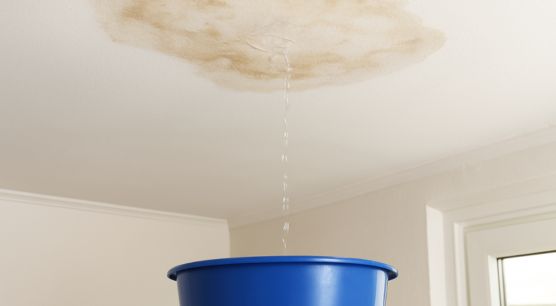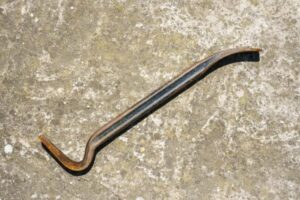There’s nothing quite like hearing that unmistakable *plink… plink…* during a storm. One minute your home feels safe and dry, and the next you’re scrambling for buckets. When a leak pops up out of nowhere, panic is natural. But with a few smart moves—and a little calm—you can control the damage while arranging proper emergency roof leak repair from trusted professionals.
Before you imagine the worst-case scenario (we’ve all been there), take a breath. A sudden leak doesn’t always mean catastrophic roof damage. Sometimes it’s a loose shingle, clogged gutter, or a bit of flashing that’s given up under pressure. Whatever the cause, quick action is your best defense.
Why Sudden Roof Leaks Happen
Roofs often fail at the most inconvenient time—usually during heavy rain or strong winds. According to data shared by the U.S. Federal Emergency Management Agency (FEMA.gov), water intrusion is among the most common and costly forms of home damage during storms. And much of it happens due to small vulnerabilities that escalate fast when weather conditions worsen.
Some typical culprits include:
- Damaged or missing shingles after a storm.
- Clogged gutters causing water to pool and seep inside.
- Cracked flashing around chimneys, vents, and skylights.
- Age-related wear, especially on roofs over 15–20 years old.
While long-term solutions require professional inspection, there are temporary fixes you can do right now to minimize damage.
Also Read: Do Minor Roofing Problems Result in Bigger Leaks?
Quick Fixes You Can Try Immediately
1. Contain the Leak First
Before touching ladders or tools, your priority is stopping water from ruining floors and furniture. Grab a bucket, pot, or large container. If the drip is irregular, place an old towel at the bottom to soften the sound—there’s no need to stay awake listening to a metallic plink all night.
2. Relieve Ceiling Pressure
If you see a bulging patch in the ceiling, that means water is pooling above it. Carefully use a screwdriver to poke a small hole in the center and let the water drain safely into a bucket. Strange as it seems, this prevents a larger and more damaging collapse.
3. Check the Roof from the Ground
Avoid climbing up during rain or strong winds. Instead, inspect from the ground using a flashlight or phone camera zoom. Look for loose shingles, displaced ridge caps, or debris buildup. This will help you explain the issue clearly when calling for repairs.
4. Seal Small Gaps Temporarily
If it’s safe and dry outside, you can apply a temporary patch using roofing tape or tarps. Heavy-duty tarps anchored securely with boards can divert water away until you can arrange professional help. If your home uses tiles, remember that the tile roof repair cost will depend on how many tiles are cracked or displaced—so avoid walking directly on them to prevent breakage.
When to Call the Professionals
Even if you’ve made a solid temporary fix, leaks require expert attention. Persistent dripping, multiple entry points, or major storm damage calls for professional assessment. Midway through this process, many homeowners reach out to full-service experts like Adelaide roofing services to inspect the roof, strengthen weak points, and provide long-term repair solutions.
Trying to handle a serious leak on your own can make things worse. Roofs are complex systems—insulation, ventilation, tiles, shingles, flashing—and a single DIY misstep may cause further water intrusion or even injury.
Ways to Prevent Future Roof Leaks
You can’t control the weather, but you can prepare your roof to handle whatever nature throws at it. Consider these prevention strategies:
- Clean gutters twice a year to ensure proper drainage.
- Trim overhanging branches to prevent impact damage.
- Check for cracked flashing around chimneys and skylights.
- Schedule annual roof inspections—small issues are cheaper to fix early.
According to the Insurance Institute for Business & Home Safety (IBHS.org), routine roof maintenance can reduce weather-related water damage by as much as 40%. That’s a pretty compelling reason to make it a habit.
Checklist: What to Do the Moment a Leak Appears
- Move valuables and electrical items away from the drip.
- Set buckets under active leaks and absorb excess water.
- Relieve pressure from bulging ceilings if safe.
- Document the damage (helpful for insurance claims).
- Call a licensed roofing specialist for immediate assistance.
FAQs
1. Can I fix a roof leak myself?
You can perform temporary fixes like placing a tarp or clearing gutters, but permanent repairs require professional expertise for safety and quality.
2. How quickly should I address a roof leak?
Immediately. Even small leaks can damage insulation, wiring, and structural elements within hours.
3. What if the leak happens at night?
Contain the water, clear the area, and wait until conditions are safe. Avoid climbing the roof in the dark or during rain.
4. Will insurance cover roof leak damage?
Coverage varies by provider and cause. Sudden storm-related leaks are often covered, while maintenance-related issues may not be.
Final Thoughts
A sudden roof leak can throw your whole day—or night—into chaos, but quick thinking goes a long way. Protect your home first, create temporary solutions, and bring in professionals to secure the root of the problem. With timely action, your roof will be back to shielding your home the way it should.
Also Read: 2025 Roof Restoration Costs in Adelaide: Your Complete Guide
Blog Development Credits
This blog was a team effort fueled by smart ideas. John Martin picked the topic. Most content was crafted using tools like ChatGPT and Google Gemini. The Digital Piloto team polished and optimized the blog to ensure it’s clear, engaging and SEO-friendly.





